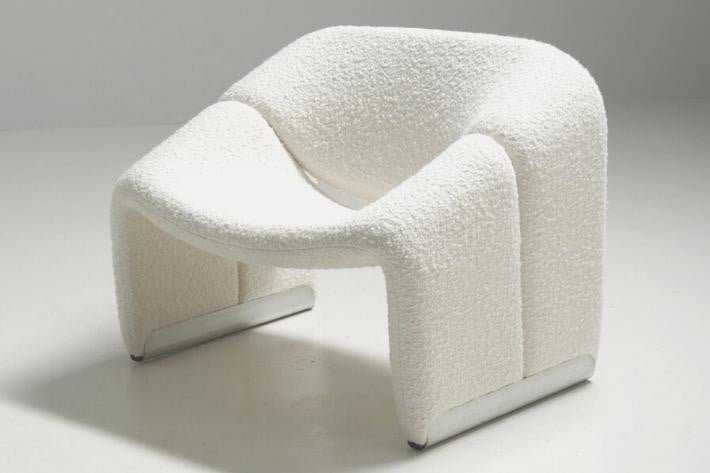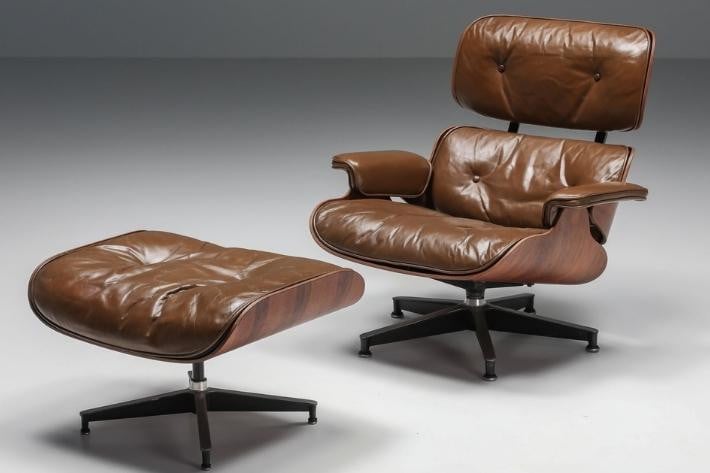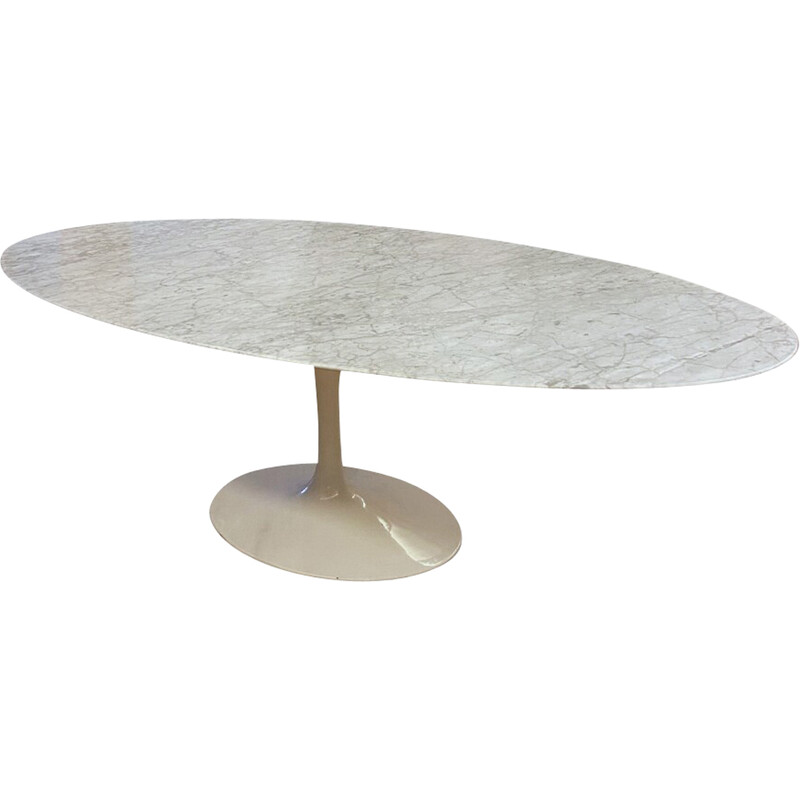Vintage dining table "Tulip" marble top by Eero Saarinen
Spain
Sold
Are you looking for a similar product?
You can contact our Customer Service from : Monday to Friday from 9.30am to 6.30pm.
Tel : 00 33 1 84 13 18 13
Email via this form
About this vintage design furniture
“Tulip” dining table, Eero Saarinen for Knoll s. XX – Finland
Extraordinary “Tulip” model dining table designed by Eero Saarinen. Widely recognized table, a classic in the history of design. It is configured with a large central pedestal with a circular base and thin shaft made of cast aluminum with a white coating. The smooth transition between these two parts, base and shaft, makes it an icon. The marble top has an oval shape and a grayish vein. The circle and the oval are two elements always present in Saarinem's designs, because in addition to being essential shapes they refer to the organic, and it cannot be forgotten that man himself is an organic element.
When referring to the history of this design, it is always said that for Saarinem the “lower neighborhood of the legs”, that is, what is observed under the chairs and tables, was a “confusing, restless and ugly” world. ". To do this, he studied the best way to put an end to it and after five years he presented the “Tulip” or Pedestal Collection, introduced in 1958. This table can be combined with another style of furniture with ease, that is, it can be integrated into perfection with more classic chairs. However, in the collection he designed the chairs, as well as a smaller or auxiliary table. The Tulip chairs are also made of enamelled aluminum and fiberglass.
Eero Saarinem
Prolific and versatile, Eero Saarinen (1910-1961) was an innovator in the forms of architecture and furniture design. He did not want to be limited by the strict geometry of functionalism and embraced the sensuality and symbolism of curved forms. With the passage of time, his figure grows larger and his decisive contribution to modern architecture and his strong commitment to intuitive and humanized design are recognized.
He lived only 51 years, and died without seeing the construction of two of the works that have given him a prominent place in the history of architecture and gave architectural identity to the United States: the TWA terminal at Kennedy Airport in New York – today national monument – and the Gateaway arch of the city of San Luis, a tribute to the Americans who explored the West of the country, and which in its bold shape and complicated engineering perfectly symbolizes the challenge and adventure of that expansion. The monument was completed in 1965, four years after his death, and, like many of Saarinen's works, it provoked controversy at the time, although today it is a landmark.
Throughout his career, he practiced eclectic architecture, in which he gave each building an individual character that responded to the physical and symbolic needs of the client, although to do so he had to skip some premises of modern architecture and was accused of excessive or rhetorical by the guardians of modernity.
Eero Saarinen worked in the 1930s with Charles Eames, who had studied at Cranbrook Academy in Michigan, an institution dedicated to highlighting the fusion of form and function, material and idea, craft and technology. The Academy building had been designed precisely by the Finnish architect Eliel Saarinen, Eero's father.
Along with Charles Eames, Saarinen pioneered the design of furniture that adapted to the shapes of the human body and retained this interest in organic shapes and structures in his work as an architect, seeking to expand the expressive range of architecture. modern.
That is why his contribution in this field also left a strong mark: the Tulip table and chair, and the Womb armchair, all produced by Knoll, are cult objects for design lovers. The Tulip chair manifests Saarinen's search for a continuous, uninterrupted and comfortable way for different types of the human body. He is also famous for the series of seats that he created together with Charles Eames for the Organic Design in Home Furnishing competition, which today is manufactured by Vitra under the name Organic.
The biography has been created through Architecture and Design. (https://www.arquitecturaydiseno.es/creadores/eero-saarinen)
Dimensions: 73 x 235 x 124 cm.
Envelope dimensions 2 x 235 x 124 cm
Base dimensions: 59 x 80 cm.
Shipping of the product will be paid by the buyer according to the dimensions, weight and destination. Professional custom-made packaging is included in the shipping costs; and personalized shipping, with tracking number and warranty.
Reference : 306736
a question about this product?
If you have any questions about this product, you can contact our Customer Service from : Monday to Friday from 9.30am to 6.30pm.
Tel : 00 33 1 84 13 18 13
Email via this form
Features
- Length
- 235 cm
- Height
- 73 cm
- Depth
- 124 cm
- Designer
- Eero SAARINEN
- Condition
- Good
- Style
- Scandinavian
- Period
- 1960s
- Origin
- Finland
- Colour
- White
- Main material
- Marble
- Other material
- Aluminum
delivery and return
- Shipped from : Spain
- Delivery time :
- 1 week for small items
- 2 to 5 weeks for bulky products
- Return possible: up to 14 days after delivery
About the designer
Eero SAARINEN
1910 - 1961Eero Saarinen is an American designer of Finnish origin. He has designed numerous successful pieces of designer furniture for Knoll, and is one of the most prolific designers of the 20th century.





.jpg)
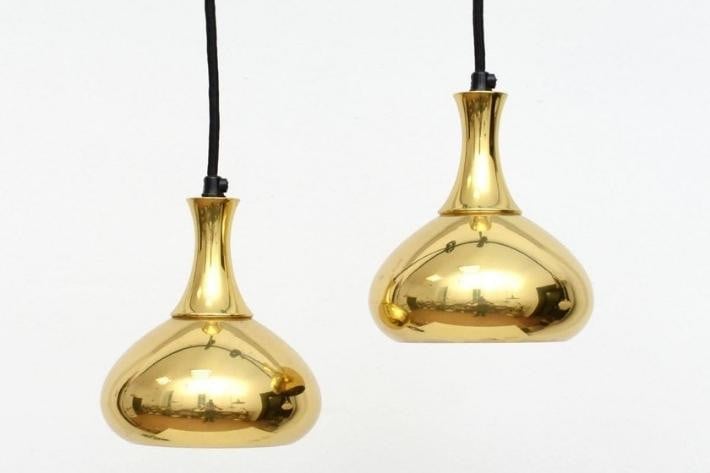
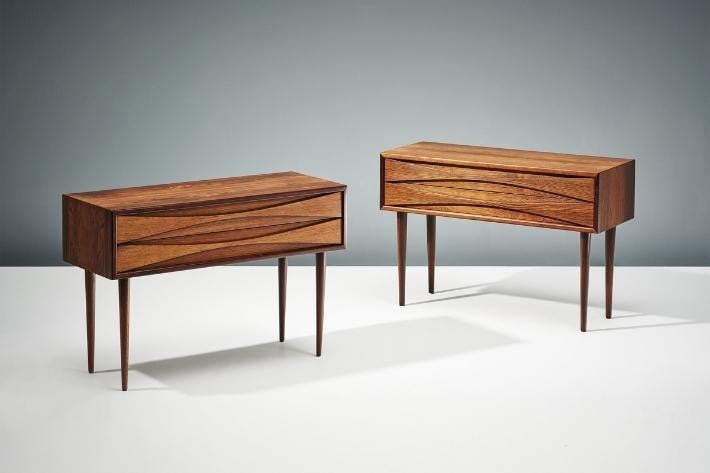
.jpg)
